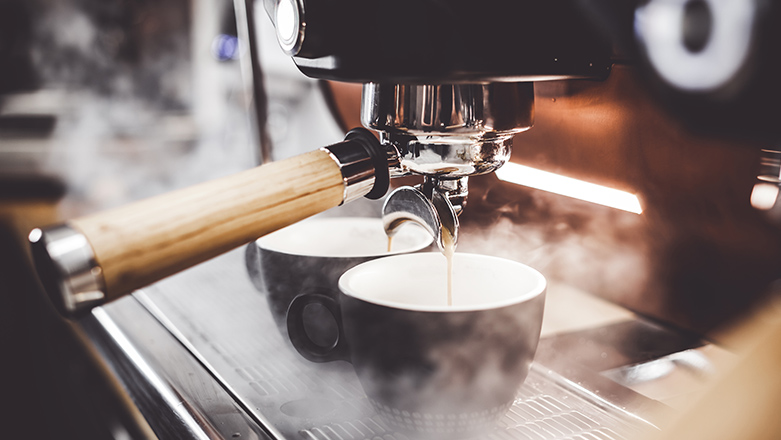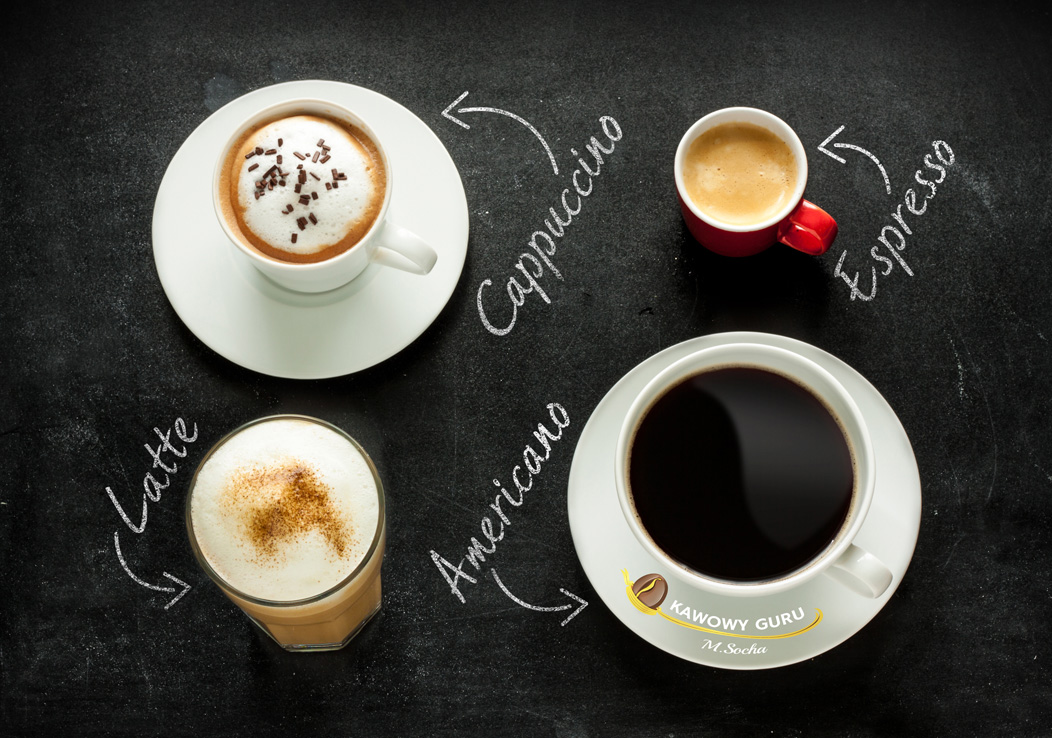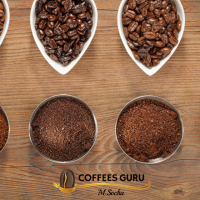In my previous article I wrote about different coffees, most based on espresso. This time I would like to focus only on espresso as it’s the most important factor, which affects the final result of cappuccino, latte or any other espresso based coffee.
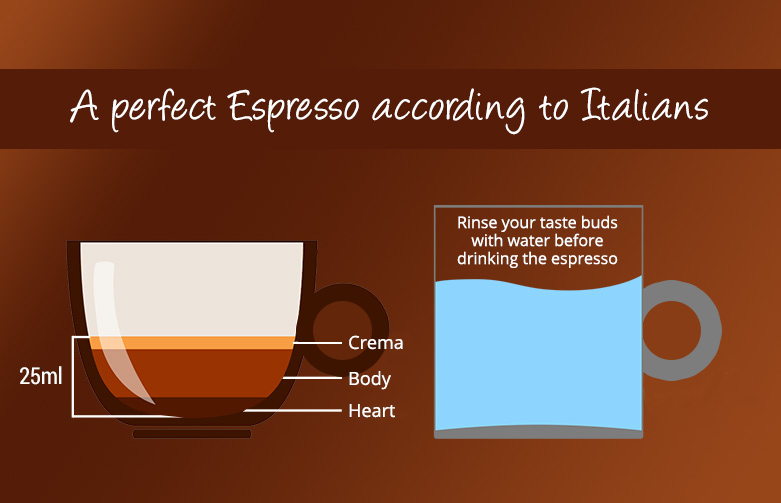
Espresso should have 25 ml volume. It’s served in a heated porcelain cup of 70 ml volume. There is a dense nutty-brown foam at the top, the foam gives the coffee a sweet taste. Middle part of the cup is named body, which has a dark brown color. At the bottom, lies the heart, which means the essence of espresso, it’s the source of its strength and intensity. Served alongside espresso is a glass of water. It’s used for flushing taste buds before drinking coffee. Sometimes I can see people who drink espresso first and water second. Don’t do that! A cup of espresso is not vodka! Another important thing is the name. Of course it’s espresso, not expresso. The name of this coffee has nothing to do with the speed of its brewing, it refers to Italian adjective espressivo, that means expressive.
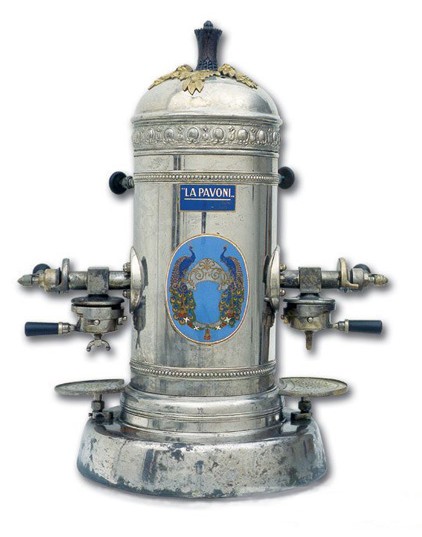
Espresso originated from Italy over 100 years ago. In 1901 Luigi Bezzera created a coffee machine based on pressurized water flow, but he couldn’t get rid of steam, which worsen the taste of coffee. Roughly 4 years later Desiderio Pavoni bought the patent for machine from Bezzera and slightly modified it. The steam however was still a problem and only after 4 decades in 1947 Achille Gaggia creater a new water heating system, that solved the steam problem. All companies founded by men listed above function till this day. Bezzera, La Pavoni and Gaggia are reputable producers of coffee makers for house use or gastronomy locals.
Espresso gained popularity in Italy alongside progressive urbanization. Espresso bars started to appear, their prices were regulated by local authorities, provided that coffee was served ,,on stand”. Coffee is small, so drinking it, took only a while. Till this day many Italians still drink their morning ,,small black coffee” in that way. Considering that espresso in good Roman cafes costs around 1€, it’s not a big expense.
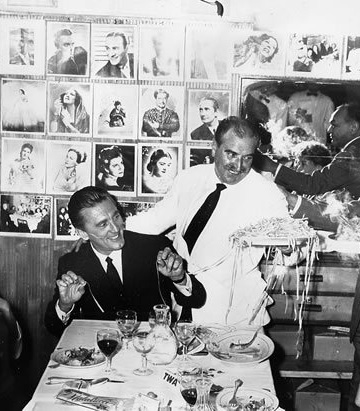 Global espresso expansion started in 1950s and has a few reasons. First is the emigration of Italians, mostly to USA. Italian diasporas e.g. famous New Yorks ,,Little Italy” were the hearts of Italian culture, including culinary culture. Second reason of worldwide espresso success was the presence of Allied soldiers in Italy during World War II, who after returning to their countries talked about great Italian coffee and often looked for it in Italian diaspores. Another reason that helped espresso reach the national success was… Hollywood. In 1950s and 1960s the fashion for so called „sword-and-sandal” movies, which means that the action took place in the antiquity (and their characters wore sandals – hence the name). It was during this time when movies like „Cleopatra”, „Ben Hur”, „Spartacus”, „Quo Vadis” and many others were created. Most of these movies weren’t shot in Los Angeles, but in Italy. Actors took Brioni suits, Ferrari cars and… great Italian coffee.
Global espresso expansion started in 1950s and has a few reasons. First is the emigration of Italians, mostly to USA. Italian diasporas e.g. famous New Yorks ,,Little Italy” were the hearts of Italian culture, including culinary culture. Second reason of worldwide espresso success was the presence of Allied soldiers in Italy during World War II, who after returning to their countries talked about great Italian coffee and often looked for it in Italian diaspores. Another reason that helped espresso reach the national success was… Hollywood. In 1950s and 1960s the fashion for so called „sword-and-sandal” movies, which means that the action took place in the antiquity (and their characters wore sandals – hence the name). It was during this time when movies like „Cleopatra”, „Ben Hur”, „Spartacus”, „Quo Vadis” and many others were created. Most of these movies weren’t shot in Los Angeles, but in Italy. Actors took Brioni suits, Ferrari cars and… great Italian coffee.
Over time espresso became one of Italian symbols. To preserve it and give it an appropriate rank, the National Institute of Italian Espresso (Instituto Nazionale Espresso Italiano) was established. It precisely defined the parameters that are characteristic for ideal espresso.

Making an espresso isn’t difficult, but it requires a short training and then a bit of practice. Making an espresso is easy, but making an ideal espresso or at least a good espresso is much harder. I won’t write how to use a pressure coffee machine, because it’s a topic for entirely different article, but I would like to give you some advices, that are worth remembering while ordering an espresso (or any other coffee). First: barista should grind the coffee in front of you.
He has a grinder not for decoration, but for using. If you can see a big amount of ground coffee in the grinders container, you can already leave the local. Espresso is supposed to be the essence of coffee, so it has to be made out of fresh ground coffee beans, right before brewing. Second: espresso should be around 100 ml volume. It happens that baristas make a slightly bigger ones (e.g. 30-35 ml) and it’s still acceptable, but conservative Italian would consider that type of drink a lungo, not espresso.
However, if after ordering espresso, you are being served a cup half full of coffee… then something is not right. Third: at the top of espresso, there should be a crema – a light-brown colored foam. It should cover the entireity of coffee. If it’s missing or it’s a really small amount, this means that coffee beans used to make your coffee were either roasted a very long time ago or they were ground the wrong way and extraction didn’t go as it should have gone. So, always look into your baristas hands and don’t let them sell you an espresso that isn’t even a real espresso. Visit Coffees GURU to expand your coffee knowledge and follow me on facebook to be updated!


